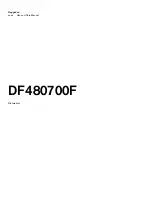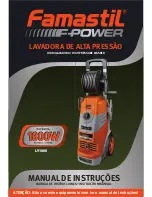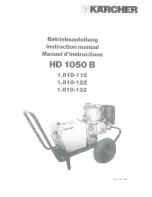
20
TROUBLESHOOTING
First try the solutions suggested here and possibly avoid the cost of a service call...
Washer and Components
Washer displaying code messages
■
“LF” (Washer is taking too long to fill)
Check the following:
Are the water inlet hoses kinked or clogged?
Are the water inlet valve screens clear?
Press PAUSE/CANCEL to clear display.
■
“Ld” (Washer is taking too long to drain water from
the wash tub)
Check the following:
Is the drain hose kinked or clogged?
Is the drain hose installed properly? See “Connect the Drain
Hose.” Press PAUSE/CANCEL to clear display.
■
“uL” (Unbalanced Load)
If the load is unbalanced, the washer will display this code
while running an imbalanced load correction routine at the
end of the wash cycle and before the final spin. If the code
remains and the wash cycle dial is flashing after the recovery
routine has stopped, open lid and redistribute the load. Close
lid and press START.
■
“oL” (Over Load)
Is the washer overloaded? The washer has attempted to fill
and begin the wash cycle. If the washer is overloaded, it will
drain any water and detergent that was added during the fill.
To correct the overload, remove several items and add
detergent. Close lid and press START.
■
“Sd” (Suds Detected)
Did you add too much detergent?
Always measure detergent. Follow detergent manufacturer’s
directions.
If excessive suds are detected, the washer will display this
code while running a suds reduction correction routine at the
end of the wash cycle. The suds reduction routine removes
extra suds and assures proper rinsing of your garments. If the
code remains and the wash cycle dial is flashing after the
recovery routine has stopped, re-select your desired cycle
using cold water. Press START. Do not add detergent.
■
“lid” (Lid Opened)
Is the lid open? Close the lid to clear the display.
■
“HC” (Cold and Hot hoses switched)
This code will appear at the end of the wash cycle to indicate
that the cold and hot water inlet hoses are switched. If an
error code does not appear but you are experiencing poor
washing performance, check to see whether the inlet hoses
are reversed. See “Connect the Inlet Hoses.”
■
“dL” (Door/Lid cannot lock)
Indicates lid is not locked. Check for items caught in the lid
keeping it from closing. Press PAUSE/CANCEL once to clear
the code.
■
“dU” (Door/Lid cannot unlock)
Is there excessive weight on the lid, such as a basket of
laundry? Excessive weight will keep the lid from unlocking.
Press PAUSE/CANCEL once to clear the code.
■
“F##” code
Press PAUSE/CANCEL once to clear code. Press START. If
code appears again, call for service.
Noisy, vibrating, off-balance
■
Is the washer level? Does the washer rock when pushed
against the corners?
The washer must be level. The front and rear feet must be in
firm contact with the floor. Check that the locknuts are
tightened. See “Level the Washer.”
■
Is the floor flexing, sagging or not level?
Flooring that flexes or is uneven can contribute to noise and
vibration of the washer. A
³⁄₄
" (1.9 cm) piece of plywood under
the washer will reduce the sounds. See “Location
Requirements.”
■
Is the load balanced?
Evenly distribute the load in the washer basket and make
sure the height of the load does not exceed the top row of
basket holes. See “Starting Your Washer.”
■
Do you hear clicking or other noises when the cycle
changes from washing to draining or spinning?
When the drive system shifts or the washer basket settles
between cycles you may hear noises that are different from
your previous washer. These are normal washer noises.
■
Is the washer gurgling or humming?
When the washer drains, the pump will make a continuous
humming with periodic gurgling or surging sounds as the final
amounts of water are removed. This is normal.
■
Are you washing a small load?
You will hear more splashing sounds when washing small
loads. This is normal.
■
The washer basket moves while washing.
This is normal.
Washer leaks
■
Are the fill hoses tight?
■
Are the fill hose washers properly seated?
Check both ends of each hose. See “Connect the Inlet
Hoses.”
■
Did you pull the drain hose from the washer cabinet and
install it in a standpipe or laundry tub?
The drain hose should be pulled from the washer cabinet and
secured to the drainpipe or laundry tub. See “Connect Drain
Hose” and “Secure the Drain Hose.”
■
Is the sink or drain clogged?
Sink and drainpipe must be able to carry away 17 gal. (64 L)
of water per minute. If sink or drainpipe is clogged or slow,
water can back up out of drainpipe or sink.
■
Is water splashing off the tub ring or the load?
The wash load should be balanced and not overloaded. If the
wash load is unbalanced or overloaded, incoming water can
deflect off the load.
■
Is the washer properly installed?
The washer must be level. The feet should be properly
installed and the nuts tightened. See “Level the Washer.”
















































